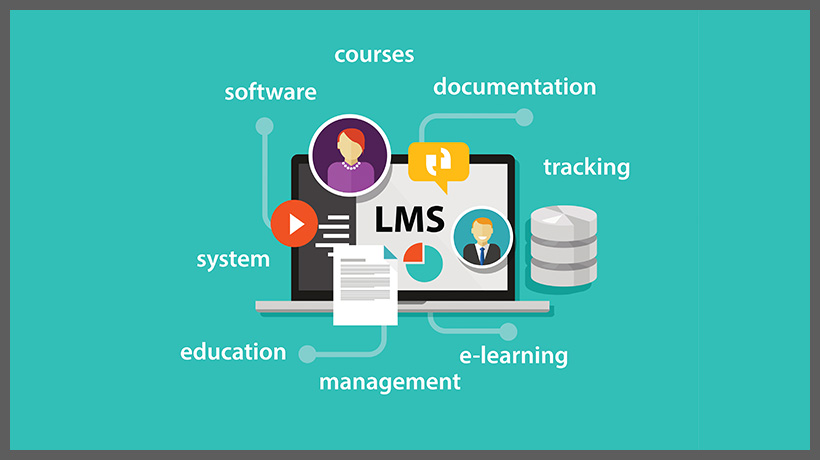
A global shift in business models has caused L&D leaders to rethink the skills they require to respond to the new paradigm and to employees’ changing learning needs. This article explores those new L&D skills and why L&D needs them to keep up with the times.
Redefining Roles for L&D Leaders
Businesses are navigating a landscape characterized by shifts in globalization, technological advancements, changing business models, new work paradigms, economic fluctuations, and a shortage of talent. This change has compelled Learning & Development (L&D) teams to reexamine their roles and strategies. Some of the transformative forces that are reshaping businesses and necessitating a review of L&D skills include:
-
Globalization: Redefining Business Boundaries
Globalization has dismantled traditional geographical barriers, enabling businesses to access new markets, forge international collaborations, and tap into diverse talent pools. This shift has also intensified competition and increased the complexity of business operations. L&D teams must now equip employees with cross-cultural competencies, language skills, and the ability to collaborate across time zones.
-
Shortage of Talent: Nurturing Internal Growth
The scarcity of talent is another critical factor that has reshaped the business landscape. As industries evolve rapidly, finding candidates with the skill sets required is a daunting task. Consequently, businesses are realizing the value of nurturing internal talent and upskilling their existing workforce. This is where L&D teams play a pivotal role.
-
Economic Impacts: Adapting to Uncertainty
Economic fluctuations have highlighted the need for businesses to be agile and adaptable. This compels organizations to reevaluate their strategies, optimize costs, and streamline operations. Consequently, L&D teams are under pressure to acquire new L&D skills, so they can demonstrate the tangible value of their initiatives in the face of budget constraints.
-
New Technology: Revolutionizing Learning & Development
The advent of new technologies, including Artificial Intelligence (AI), Machine Learning (ML), and Virtual Reality (VR), has revolutionized the way businesses operate and interact. These technologies have also impacted the field of L&D, compelling the delivery of more personalized, immersive, and efficient learning experiences.
Focus Areas and Skills of L&D Leaders in High-performing Organizations
High-performing organizations are reevaluating their approach to L&D. Recent industry research offers valuable insights into the areas of focus for these top-tier organizations:
- Balanced Skill Prioritization: High-performing organizations accord equal importance to both core business skills such as marketing and project management, and L&D-specific skills like training delivery and design. This recognition underscores their effectiveness in nurturing human resource development.
- Elevated Emphasis on Relationship Management: There is a noticeable shift toward emphasizing relationship management in L&D. This trend highlights the increasingly cross-functional nature of L&D within high-performing organizations.
- Collaborative Expansion: High-performing organizations are adept at transcending traditional boundaries and collaborating with various departments. This collaborative approach aligns efforts across the organization to achieve overarching business objectives.
The study underscores the transformative journey of L&D teams within high-performing organizations. Their proficiency in blending diverse skills, their role as connectors across departments, and their integration of skillsets – are all indicative of an evolving L&D landscape.
What Skills Should Future-facing L&D Leaders Develop?
L&D leadership faces the critical task of not only preparing employees for the challenges of tomorrow but also navigating the shifts in organizational goals. To futureproof L&D and lead their teams successfully, leaders must equip themselves with new L&D skills that align with the demands of the workplace. These include:
-
Expertise in Functional Knowledge: Staying Ahead of the Curve
One of the foundational skills for L&D professionals is to possess a deep and up-to-date understanding of their industry, company, and the broader business landscape. This expertise ensures that L&D aligns its strategies with the organization, ensuring training initiatives are relevant and impactful.
-
Enhanced Communication Skills: Connecting with Diverse Audiences
Effective communication is the cornerstone of successful leadership. L&D leaders must excel in conveying complex concepts clearly and compellingly. Such skills for L&D professionals are especially crucial as they interact with diverse audiences, including executives, employees, subject matter experts, and external partners. Additionally, as remote and virtual work becomes more prevalent, mastering virtual communication tools and techniques becomes a necessity.
-
Relationship Management: Nurturing Collaborative Partnerships
In today’s dramatically transformed business landscape, L&D rarely executes its initiatives in isolation. L&D leaders need to build strong relationships with stakeholders from various departments, including HR, IT, finance, and operations. Collaboration is key to aligning learning strategies with organizational goals and ensuring the seamless integration of L&D initiatives with other functions.
-
Business Competence: Aligning Learning with Future Business Goals
Today, L&D is no longer solely about training employees; today’s L&D leaders are strategic partners who drive business outcomes. To fulfill this role, L&D leaders must possess a strong understanding of future business operations, financial principles, and market dynamics. This business acumen enables them to create L&D strategies that directly contribute to bottom-line results.
-
Negotiation Proficiency: Advocating for Learning Initiatives
Negotiation skills are indispensable for L&D leaders as they advocate for resources, budgets, and support for their initiatives. Whether negotiating with senior leaders for increased funding, or with external vendors for the best training solutions, L&D leaders must be adept at articulating the value proposition and securing favorable outcomes.
-
Technology Adeptness: Harnessing the Power of Innovation
Technology has transformed the landscape of learning, and L&D leaders must embrace and leverage it. From Learning Management Systems (LMS) to AI-powered learning analytics, understanding how technology can enhance learning experiences and deliver actionable insights is critical. Learning professionals must acquire new L&D skills to integrate these innovations into training programs to drive engagement and skill acquisition.
-
Change Management Mindset: Guiding Through Transformation
Change is a constant in today’s business world, and L&D leaders must possess a change management mindset to navigate their teams and organizations through transitions. As companies undergo restructuring, adopt new technologies, or pivot their strategies, these skills also help L&D leaders play a pivotal role in helping employees adapt to change.
Workforce Transformation
Technological advancements, shifts in workplace culture, and the ongoing need for agility have all contributed to a changing workforce. Needless to add, L&D leaders face an imperative to adjust strategies to meet the needs of this workforce. This is placing more demands on L&D to equip themselves with skills to stay ahead of the technology learning curve. Some of those areas of transformation include:
-
Onboarding New Employees
Onboarding new employees has undergone a seismic shift in recent years. With the rise of technology and the demand for quicker integration into teams, L&D must leverage technology to facilitate faster, more efficient onboarding.
-
Sales Training
The sales landscape has changed dramatically with the advent of new tools and technologies. Sales teams now collaborate more closely and respond nimbly to dynamic market conditions. L&D teams must provide state-of-the-art training that equips sales professionals with the skills they need to excel in this environment.
-
Safety Training
Safety training has witnessed a revolution, particularly with the incorporation of immersive learning technologies such as Virtual Reality (VR), Augmented Reality (AR), and Mixed Reality (MR). To reduce workplace injuries and accidents, training leaders must equip themselves with L&D skills to explore these technologies to provide realistic training experiences.
-
Remote Work Transition
Remote work has compelled L&D managers to design training programs that cater to geographically dispersed teams. Virtual classrooms, webinars, and online collaboration tools have become crucial components of modern L&D strategies.
-
Diversity, Equity, and Inclusion (DEI)
The focus on fostering diverse and inclusive workplaces prompts the need for better skills for L&D professionals to integrate DEI principles into training programs. This involves creating content that raises awareness, challenges biases, and promotes inclusive behaviors.
-
Data Literacy
As data-driven decision-making becomes more prevalent, L&D managers need to cultivate skills in data analysis and interpretation. This enables them to assess the effectiveness of training initiatives and tailor programs to meet specific learning needs.
Emotional Intelligence
Emotional Intelligence is the ability to recognize, understand, manage, and utilize one’s own emotions as well as those of others. These skills enable individuals to navigate complex interpersonal dynamics, communicate effectively, and build strong relationships. In the context of L&D leadership, Emotional Intelligence is important because of the following factors:
-
Empathy in Learning Design
L&D leaders with strong Emotional Intelligence skills can design training programs that resonate with learners on an emotional level. By understanding the challenges, motivations, and learning preferences of their audience, they can create content that is not only informative but also emotionally engaging.
-
Effective Communication
Clear communication is paramount in the learning and performance domain. Learning leaders with high emotional Intelligence can tailor their communication style to different individuals and groups, ensuring that they convey their messaging in ways easily understood and received by their audiences.
-
Building Strong Relationships
L&D leaders often work with cross-functional teams, subject matter experts, and external partners. Strong Emotional Intelligence enables them to build rapport, establish trust, and collaborate effectively with diverse stakeholders.
-
Managing Change
The ability to manage emotions during times of change is a hallmark of Emotional Intelligence. That’s because it equips them to address resistance, manage uncertainty, and guide employees through transitions.
-
Enhanced Learning Outcomes
L&D leaders with high Emotional Intelligence create a positive and inclusive learning environment, fostering a sense of psychological safety. This empowers learners to actively participate, ask questions, and engage in discussions, ultimately leading to deeper learning outcomes.
Top Skills L&D Must Develop to Support Business Strategy and Deliver Results
The roles of learning leaders have transformed, now closely aligned with business objectives as strategic partners rather than focusing solely on traditional training methods. By understanding how to increase the business impact of learning, L&D leaders can align learning with organizational strategic priorities. Here’s how:
-
Strategy, Planning, and Analysis: The Foundation of Business-aligned Learning
L&D leaders must possess a deep understanding of their organization’s strategic priorities to ensure that they seamlessly integrate learning initiatives into the broader business context.
-
Implementation of Effective Strategies: Bridging Learning and Business
This involves crafting training content that addresses identified skill gaps and empowers employees with the competencies needed to drive the organization forward.
-
Analyzing Data for Informed Decision-making: Measuring Impact
This involves collecting and analyzing relevant data, such as learning completion rates, skill improvement, and performance metrics, and quantifying the impact of learning interventions.
-
Communicating ROI to Business Stakeholders: Demonstrating Value
Effective communication is one of the linchpin skills for L&D professionals to demonstrate the value of their initiatives to business stakeholders. L&D leaders must articulate how learning outcomes directly correlate with improved business outcomes.
Parting Thoughts
Learning professionals must acquire relevant skills for the future to position them as drivers of business impact. In the new business paradigm, these enhanced skills enable leaders to better demonstrate the value and ensure measurable outcomes. This also allows learning leaders to build an agile and resilient workforce—one that not only adapts to change but also propels the organization forward in an ever-evolving landscape.
Learn how to harness AI and emotional intelligence to drive innovation in L&D and create superior learning experiences.
Download our latest research brief to find out how to leverage the power of AI to increase productivity, efficiency, and scale while ensuring learning experiences are emotionally intelligent.



